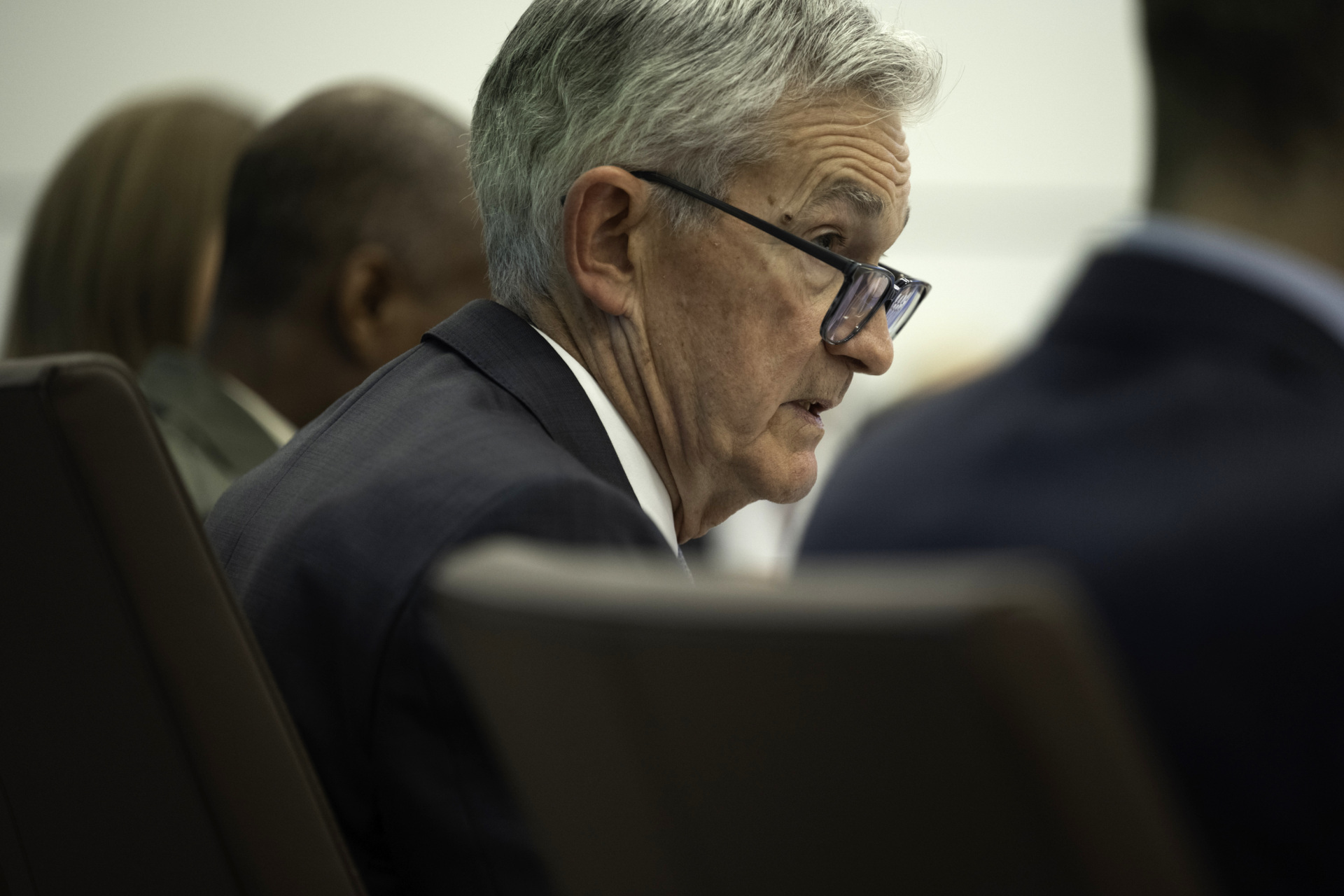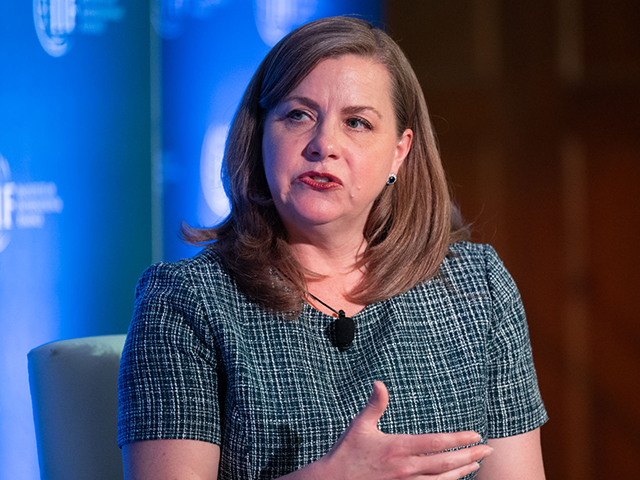Bowman Fires a Shot Across the Rate-Cutters’ Bow
The biggest underpriced risk in the market is still a hike from the Federal Reserve.
The federal funds futures market implies a near certainty that the Fed will cut interest rates by the end of the year, pricing in a 94 percent chance of at least one cut and a 65 percent chance of two cuts by the December meeting. There’s still a 66 percent chance implied of a September rate cut, despite the political explosion a cut on the eve of the election would ignite.
On Tuesday, Fed Governor Michelle Bowman attempted to throw some cold water on the fervor for rate cuts. In prepared remarks delivered in London, Bowman said she sees a number of upside risks to inflation, reiterated the need to keep rates higher for some time, and noted that she would back more rate increases if inflation remains at the current level.
“We are still not yet at the point where it is appropriate to lower the policy rate,” Bowman said. “I remain willing to raise the target range for the federal funds rate at a future meeting should progress on inflation stall or even reverse.”
This is even more hawkish than it might appear at first glance. Many Fed officials have said that they would be willing to raise rates if inflation started rising rapidly again, although they typically downplay the possibility. Bowman took that a step further by saying she would support an increase without a rise in inflation. All it would take is progression on inflation stalling.
Rates Are Likely to Stay Higher for Longer
Bowman’s stance was also more hawkish when it comes to the likelihood of progress on inflation in the near term. Many Fed officials have noted that there are upside risks to inflation, but typically this is presented alongside notes that there are downside risks to economic growth and the strength of the labor market. In Fed parlance, these risks are often said to be “balanced,” meaning neither dominates. Often the officials say that their “baseline outlook” is that inflation keeps coming down toward the two percent target, leading to a rate cut once the Fed has sufficient confidence in this disinflationary trend.
Bowman says that her baseline outlook “continues to be that U.S. inflation will return to the [Federal Open Market Committee’s] two percent goal” but immediately adds that this includes the view that the fed funds rate will hold at its current level “for some time.”
“Should the incoming data indicate that inflation is moving sustainably toward our two percent goal, it will eventually become appropriate to gradually lower the federal funds rate to prevent monetary policy from becoming overly restrictive,” Bowman said.
The emphasis on “eventually” is ours. Eventually would seem to imply not imminently. In our reading, this rules out support for a rate cut in September, which is just three months away. That’s important because even if Fed Chairman Jerome Powell were inclined to support a cut as early as September, given the near-certainty of political uproar in reaction, he’s certain to want a united Federal Open Market Committee (FOMC) backing the move. Powell doesn’t want to start cutting on the eve of the election with his own house divided.
In a moderated discussion following her prepared remarks, Bowman made it clear that she does not expect any cuts this year. Bowman had said that back in early May. What’s important here is that she is sticking to that position, not following the trend among analysts and Wall Street to read into recent data an increased chance of a cut this year.

Chair Jerome Powell participates in the Federal Open Market Committee (FOMC) meeting in Washington, DC, held on January 30-31, 2024. (Federal Reserve via Flickr)
Bowman also omitted any concern about the labor market quickly deteriorating from her review of potential economic scenarios that could affect monetary policy. Instead, all of the deviation from her baseline was around upside risks to inflation.
High Immigration Is an Upside Inflation Risk
In her prepared remarks, Bowman listed five risks to inflation getting stuck at current levels or rising.
The first risk is the end of supply-side driven disinflation. Supply chains have normalized, labor force participation rates have leveled off, and wage-depressing migration across our southern border is likely to be curtailed. In Bowman’s view “it is unlikely that further supply-side improvements will continue to lower inflation going forward.”
The second risk is “geopolitical developments,” also known as war. We have war in Gaza, on ongoing conflict in the Red Sea, and war in Ukraine. These create “the risk that spillovers from regional conflicts could disrupt global supply chains, putting additional upward pressure on food, energy, and commodity prices.” War, in other words, tends to be inflationary, and we’ve got a lot of it.
The third risk is the White House’s fiscal excesses. Bowman does not put it that way, but she notes that “additional fiscal stimulus could add momentum to demand, stalling any further progress or even causing inflation to accelerate.”
The stock market’s booming valuations pose the fourth risk. Rising stock prices, reflecting the willingness of investors to bid up the value of future cash flows, amount to a loosening of financial conditions that could also increase demand and accelerate inflation.
The fifth risk is probably the most controversial: immigration driving inflation higher, especially shelter inflation.
“There is a risk that increased immigration and continued labor market tightness could lead to persistently high core services inflation. Given the current low inventory of affordable housing, the inflow of new immigrants to some geographic areas could result in upward pressure on rents, as additional housing supply may take time to materialize,” Bowman said.
Bowman is currently an outlier on the FOMC. There were four dots at the no hike forecast in the last set of economic projections of Fed officials, with seven expecting one cut and the remaining eight expecting two cuts. But it would be a mistake to discount her view just because it is in the minority right now. We think Powell will want a unanimous committee behind the first cut, so the hawkish minority likely has more influence than its numbers suggest.

COMMENTS
Please let us know if you're having issues with commenting.